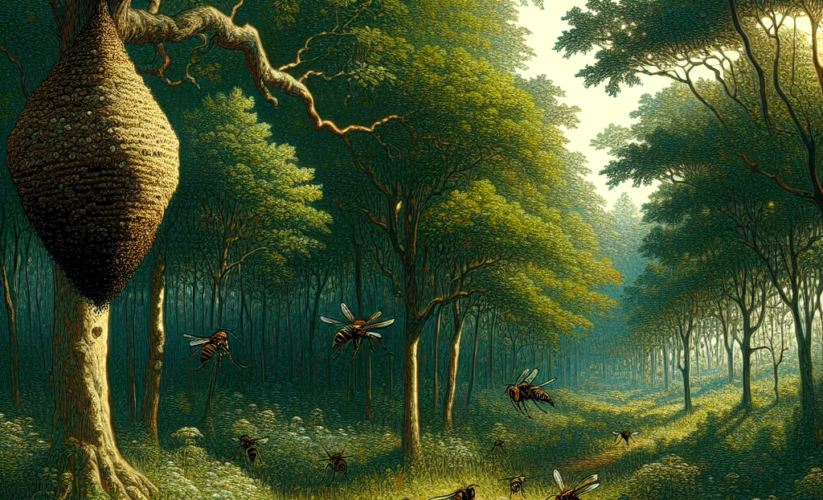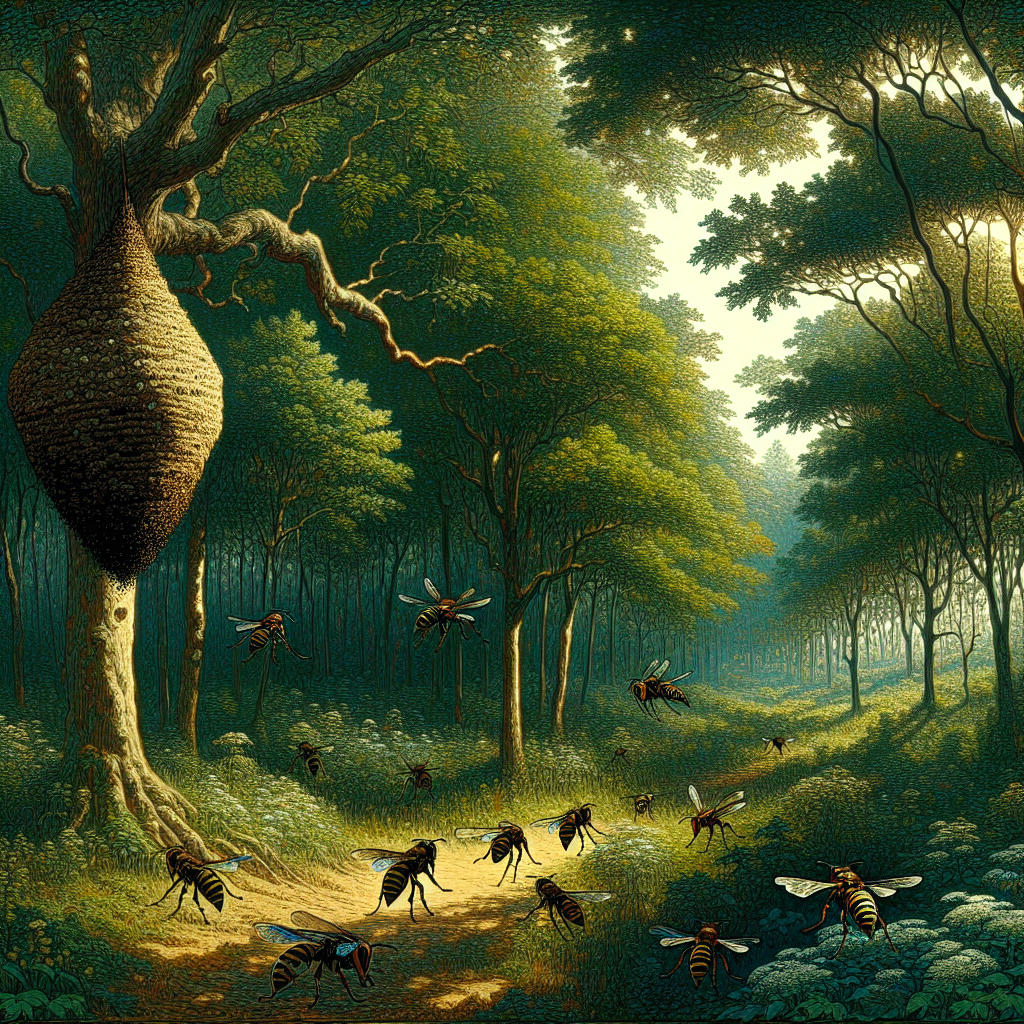
“Discover the Secrets of Hornissennest: Your Ultimate Guide”
Understanding the Hornissennest: A Guide to the Hornet’s Nest
What is a Hornissennest?
The term Hornissennest refers to a hornet’s nest, constructed primarily by the yellow jacket and European hornets. These nests can be found in trees, shrubs, and sometimes even in manmade structures. Composed of a papery substance made from chewed wood fibers mixed with saliva, these nests can be quite large and can house thousands of hornets. Understanding the characteristics and structure of a Hornissennest is crucial for anyone looking to safely navigate areas with these buzzing insects.
Structure and Composition of Hornets’ Nests
The Hornissennest is an architectural marvel of the insect world. The outer layer is usually grayish or brown, resembling paper. Inside, there are multiple layers of combs where larvae develop. A typical hornet’s nest can grow to the size of a basketball and consist of numerous chambers, perfectly designed to accommodate the colony. The nests can be easily distinguished from bees’ nests, which tend to be filled with honey and are waxy in texture. The strength and durability of the nest allow it to withstand various weather conditions, making it a fascinating subject for entomologists and nature enthusiasts alike.
Location and Habitat
Hornet nests are commonly found in various habitats. They prefer to build their homes in trees, attics, or sheltered areas. The presence of a Hornissennest indicates a thriving hornet population, usually formed during the late spring and early summer. This period sees the most activity, as workers forage for food and expand their nests. Understanding where to look for these nests can help people avoid unwanted encounters with hornets during outdoor activities.

Behavior and Lifecycle of Hornets
The lifecycle of hornets within a Hornissennest is fascinating, displaying a well-organized social structure. These insects undergo complete metamorphosis, transitioning from egg to larva to pupa and finally to adult. The reproductive cycle typically begins with a queen emerging from hibernation in early spring, ready to establish a new colony. Understanding this behavior not only sheds light on their society but also highlights the best times for intervention if necessary.
Roles Within the Colony
Within a Hornissennest, hornets take on specific roles, vital for the survival of the colony. The queen is responsible for laying eggs, while the worker hornets perform various tasks such as foraging for food, caring for larvae, and protecting the nest. Each worker has a designated job, and this division of labor contributes to the efficiency and productivity of the colony. This structured social order helps sustain the colony, ensuring it thrives during peak foraging seasons.
Threats and Predators
While the Hornissennest is designed for protection, it faces threats from both natural predators and human activities. Birds, predators such as wasp spiders, and even other insects can pose risks to hornets seeking food or laying eggs. Additionally, humans may inadvertently disturb a nest, leading to defensive behaviors from hornets. Being aware of these threats not only helps in understanding the ecological role of hornets but also ensures safety for both humans and insects in their shared environments.
Dealing with Hornett Nests Safely
For homeowners and outdoor enthusiasts, encountering a Hornissennest can be daunting. Safety is paramount. It is critical to recognize the signs of a hornet’s nest early on to avoid unwanted encounters. Relying on professionals to handle the removal or relocation is often recommended, especially during the active months when hornets are particularly aggressive. Here are some practical tips for safely managing any hornet interactions.
Preventing Nest Formation
To minimize the chance of a Hornissennest forming in your vicinity, it’s advisable to take proactive measures. Regularly check your property for potential nesting sites, such as sheltered areas under eaves, decks, or tree branches. You can also use deterrents like decoys that simulate hornet nests, which can discourage other hornets from building nearby. Effective preventative action reduces the likelihood of dealing with a large hornet population in your area.
How to Safely Remove a Hornet Nest
If you find a Hornissennest that needs to be removed, do not attempt to do this alone. Always wear protective clothing, including gloves and a face mask, and consult with pest control professionals who have experience handling such situations. They use specialized equipment and insecticides that are effective yet safe, ensuring minimal risk to you and your surroundings. Remember, attempting to remove a nest without proper precautions can have serious consequences. It’s always better to err on the side of safety.

Conclusion
Understanding the Hornissennest, its structure, lifecycle, and behavior is essential for coexistence with these fascinating insects. Whether dealing with them around your home or simply observing them in nature, knowledge is key. By implementing preventive measures and knowing how to manage potential nuisances safely, we can appreciate the vital role hornets play in our ecosystem. Being informed enables us to engage with nature more consciously and responsibly. For any concerns regarding hornets, always seek professional assistance.
FAQ
1. What attracts hornets to my property?
Hornets are often attracted to food sources, including sweet substances or proteins such as fruits, meats, and sugary drinks. Keeping garbage tightly sealed and removing any food remnants can help minimize attraction. Planting wasp-repelling flora may also deter these insects from building a Hornissennest nearby.
2. Can hornets be beneficial?
Yes, hornets play an essential role in controlling pests by preying on other insects. They contribute to the ecological balance by ensuring that certain pest populations do not explode. This natural pest control is beneficial for gardens and crops, enhancing biodiversity.
3. How can I identify a hornet from a wasp?
While hornets and wasps share similarities, hornets are typically larger with a rounder body and more vibrant coloration. Hornets also tend to build larger, more robust nests compared to the smaller, simpler nests of wasps. Observing their characteristics and behaviors can help in proper identification.
4. Are hornets aggressive?
Hornets can be aggressive, especially when they perceive a threat to their nest. It’s essential to remain calm and avoid swatting at them if encountered. If you find a Hornissennest, it’s best to keep a safe distance and consider professional assistance for removal.
5. What time of year do hornets become active?
The activity levels of hornets peak during the late spring and summer months when they are busy foraging and expanding their nest. Understanding their seasonal behavior can help you be more cautious during outdoor activities in these periods, minimizing the chances of uncomfortable encounters.
6. Can I destroy the nest at night?
While some people may attempt to destroy a Hornissennest at night when hornets are less active, this is risky. Adult hornets can still defend their nest aggressively. It is advisable to contact pest control experts who can effectively handle the situation professionally, ensuring safety.